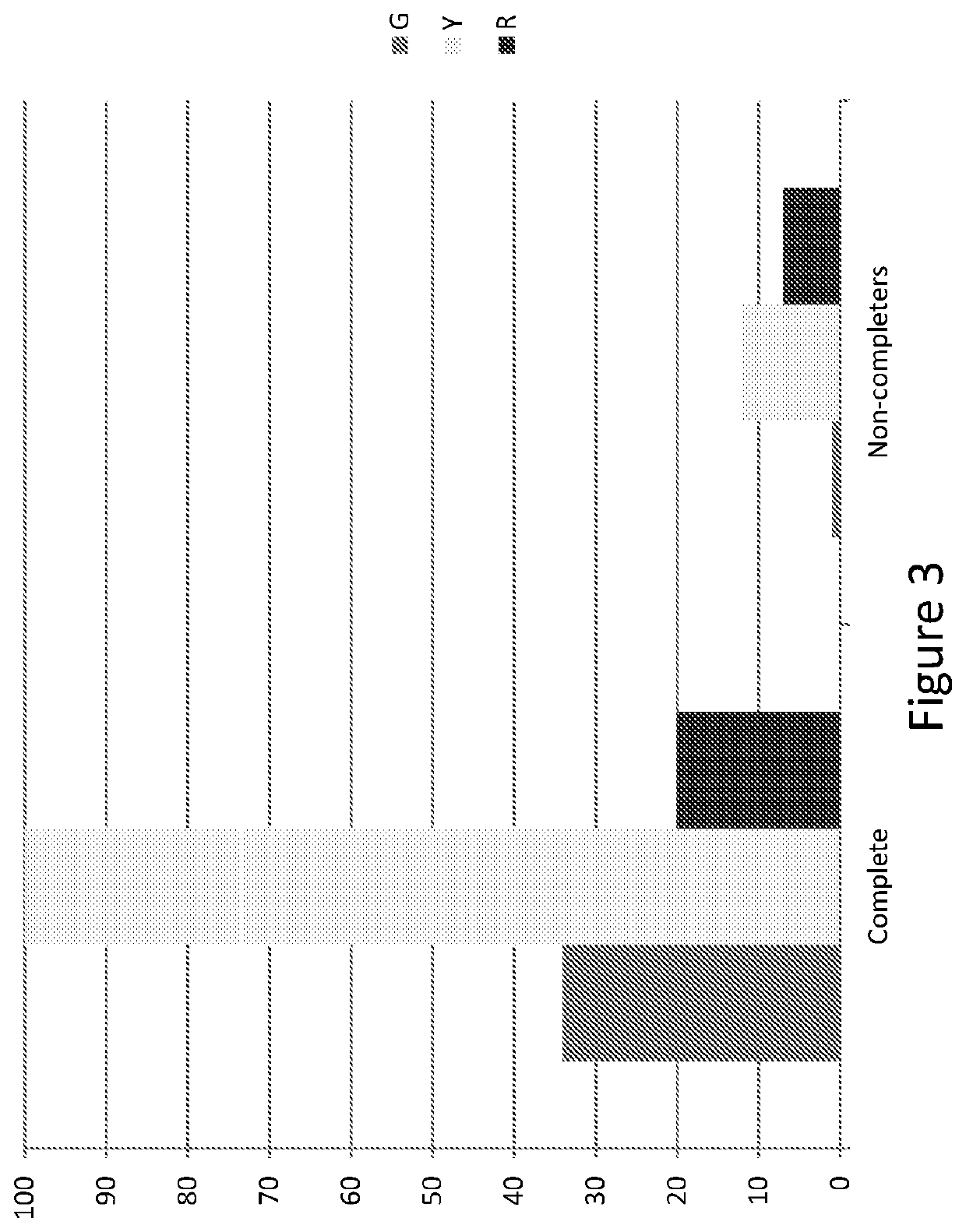Methods for treating opioid addiction
a treatment method and opioid technology, applied in the field of medicine and psychiatry, can solve the problems of opioid misuse and addiction, serious and growing public health problems, and many individuals who fail to complete the full 24 weeks of treatment, so as to improve treatment outcomes, prevent dropout, and increase treatment retention
- Summary
- Abstract
- Description
- Claims
- Application Information
AI Technical Summary
Benefits of technology
Problems solved by technology
Method used
Image
Examples
embodiment 23
24. Methadone according to the use of embodiment 23, wherein determining if the patient has a composite genetic risk score indicating a high risk of non-completion of opioid agonist replacement therapy comprises
[0171]determining, in an ex vivo sample from the subject, a genetic phenotype for one or more pharmacodynamic genes, and optionally determining the subject's genetic phenotype for one or more cytochrome P450 (CYP) genes, and
[0172]generating a composite genetic risk score for the subject.
25. Methadone according to the use of embodiment 24, further comprising,[0173]identifying the subject as having a high, risk of non-completion of opioid agonist replacement therapy based on the subject's composite genetic risk score.
26. Methadone according to the use of any of embodiments 24-25, wherein the pharmacodynamic genes are comprised of one or more of ADRA2A, COMT, HTR2A, OPRM1, and SLC6A4.
27. Methadone according to the use of any of embodiments 24-25, wherein the pharmacodynamic gene...
embodiment 42
43 Buprenorphine according to the use of embodiment 42, wherein determining if the patient has a composite genetic risk score indicating a high risk of non-completion of opioid agonist replacement therapy comprises
[0204]determining, in an ex vivo sample from the subject, a genetic phenotype for one or more pharmacodynamic genes, and optionally determining the subject's genetic phenotype for one or more cytochrome P450 (CYP) genes, and
[0205]generating a composite genetic risk score for the subject.
44 Buprenorphine according to the use of embodiment 42, further comprising,[0206]identifying the subject as having a high, risk of non-completion of opioid agonist replacement therapy based on the subject's composite genetic risk score.
45. Buprenorphine according to the use of any of embodiments 42-44, wherein the pharmacodynamic genes are comprised of one or more of ADRA2A, COMT, HTR2A, OPRM1, and SLC6A4.
46. Buprenorphine according to the use of any of embodiments 42-44, wherein the pharma...
example 1
[0235]The aim of the present study was to identify genetic markers which either alone or in combination can predict a patient's likelihood of not completing a standard treatment of opioid agonist replacement therapy. The identification of a genetic marker, or combination of markers, that is predictive of whether a patient will be a ‘completer’ or ‘non-completer’ in the context of this therapy would be useful, for example, as a means to target at risk patients for alternative treatments and / or early interventions in order to minimize risk of non-completion, increase therapy retention, and thereby improve therapy outcomes.
[0236]The present study was conducted using a dataset obtained during the ‘Starting Treatment with Agonist Replacement Therapy’ (START) trial, a 24-week, randomized, open-label, outpatient-based (9-sites) study assessing changes in liver enzymes related to treatment with methadone compared to changes in liver enzymes related to treatment with a buprenorphine / naloxone...
PUM
| Property | Measurement | Unit |
|---|---|---|
| time | aaaaa | aaaaa |
| enzyme activity | aaaaa | aaaaa |
| width | aaaaa | aaaaa |
Abstract
Description
Claims
Application Information
 Login to View More
Login to View More - R&D
- Intellectual Property
- Life Sciences
- Materials
- Tech Scout
- Unparalleled Data Quality
- Higher Quality Content
- 60% Fewer Hallucinations
Browse by: Latest US Patents, China's latest patents, Technical Efficacy Thesaurus, Application Domain, Technology Topic, Popular Technical Reports.
© 2025 PatSnap. All rights reserved.Legal|Privacy policy|Modern Slavery Act Transparency Statement|Sitemap|About US| Contact US: help@patsnap.com



